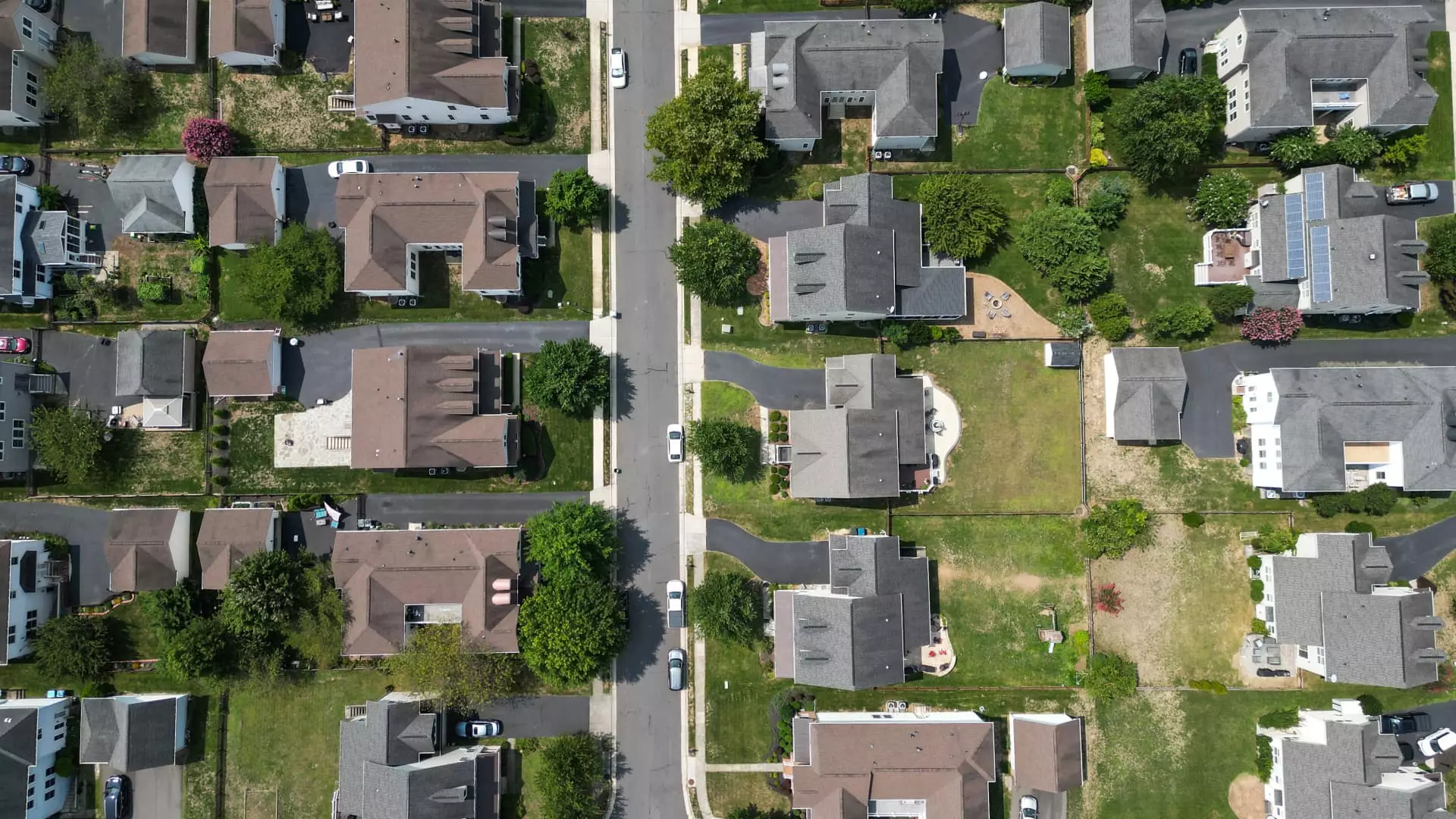Mortgage rates are once again on a seemingly relentless upward trajectory. After modest declines painted a picture of hope for homebuyers, rates have now soared to 6.85%, erasing gains from the previous week. This swift reversal of fortune mimics the erratic behavior of the stock market, leaving potential homeowners disheartened and uncertain. What’s alarming is that this spike in rates suggests we may be teetering on the edge of a more profound economic instability, rather than stepping toward recovery. The volatility in both bond and mortgage markets exposes a frail economic environment that could further complicate homeownership aspirations.
The Impact of Market Shocks and Political Turbulence
Recent announcements of global tariffs by former President Donald Trump sent shockwaves through the financial sectors, with mortgage rates temporarily dipping as investors turned to the safety net of bonds. However, the subsequent bounce-back in rates signals a critical misalignment between policy decisions and their repercussions in real-world markets. As we have witnessed, the market’s reactions stem not just from economic fundamentals but also from political maneuvers. When Treasury Secretary Scott Bessent described tariffs as a “melting ice cube,” it highlighted a crucial truth: such remark reveals a fraught negotiation environment that could lead to further uncertainty in mortgage rates.
Homebuyers can’t help but feel they are caught in a game of chance, unable to predict the next contraction. The momentary drops in rates create a false sense of security rather than a foundation for sustainable growth. Those looking to purchase homes should question whether future political climates will stabilize or continue to ebb and flow chaotically, impacting their financial decisions.
Stagnation: The Relentless Struggle for Affordability
Despite minor fluctuations in mortgage rates, the real estate market continues to grapple with the persistent issue of high home prices. The so-called “American Dream” of homeownership is increasingly out of reach for many, painting an ominous picture of stagnation. While experts like Danielle Hale, chief economist at Realtor.com, speak of a more abundant inventory entering the market, affordability is a hurdle that many cannot cross.
The high cost of purchasing remains detrimental despite the whispers of economic recovery, and the lackluster spring housing season reflects a tepid response from buyers. Buyers are overwhelmed by rising prices amid stagnant wages, and the resulting economic malaise casts a shadow on any potential resurgence in the housing market. For many, the prospect of homeownership feels like an elusive mirage.
The Red Flags of Market Activity
Looking at the metrics, the picture becomes even grimmer. The National Association of Realtors recently reported that pending home sales rose only a meager 2% from January to February—a lack of momentum that belies the intense challenges facing the housing market. February’s sales figures still lag behind previous years, exposing a troubling disconnect between economic predictions and the lived experiences of potential homeowners.
The so-called “mortgage rate lock-in effect” reveals another layer of complexity in the housing landscape. Homeowners hesitant to sell their homes due to higher current rates are essentially creating a bottleneck, stifling supply and exacerbating the affordability crisis. Until mortgage rates decline more meaningfully, it may be difficult to shake this cycle of stagnation.
The Road Ahead: A Reflection on Future Trends
As we now await critical economic indicators, such as the consumer price index, there is a sense of urgency in the space. Market participants remain acutely aware of how these metrics may sway future mortgage rates. The drumbeat of impending reports, however, cannot erase the anxiety leading up to them. For homebuyers and sellers alike, the housing landscape is fraught with uncertainty, revealing that far more than base rates are at stake.
In a political climate that seems ever more unpredictable, homeownership should not be relegated to a mere gamble, where one’s dreams are dependent on erratic economic swings. The challenge remains: how do we create an environment conducive to responsible homeownership, rather than one driven by fear and market fluctuations? Until we tackle these systemic issues, the journey toward homeownership will remain a daunting and volatile expedition for many.

